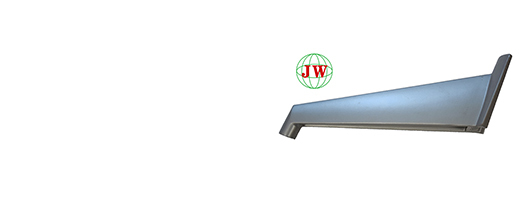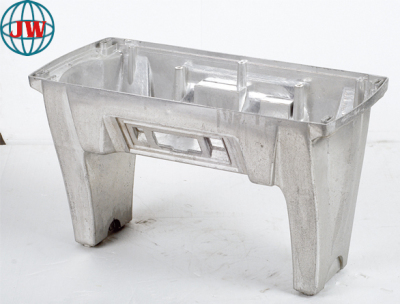
Global Die-Casting Industry Surges: Driven by EV Demand, Material Innovation, and Sustainable Practices
2025-10-16 15:30
The global die-casting industryis experiencing unprecedented growth, fueled by soaring demand from the electric vehicle (EV) sector, breakthroughs in material science, and a universal shift toward sustainability. As a core manufacturing process that shapes molten metals into high-precision components, die-casting has evolved from a niche technique to a backbone of industries ranging from automotive to electronics. In 2024 alone, the market was valued at $78 billion, with projections to hit $115 billion by 2030—a CAGR of 6.8%—according to a recent report by Market Research Future. This expansion is not just about volume; it’s a transformation driven by three game-changing trends that are redefining how die-casting operatesand delivers value.
EV Boom: The Single Biggest Driver of Die-Casting Growth
The automotive industry has long been the die-castingsector’s largest customer, but the rise of EVs has supercharged demand. Unlike traditional internal combustion engine (ICE) vehicles, EVs rely on large, complex components—such as battery housings, motor casings, and inverter enclosures—that require the precision and scalability of die-casting.
High-Pressure Die-Casting (HPDC) has become the gold standard for EV parts, as it can produce large, near-net-shape components in high volumes. Tesla’s pioneering “Giga Press” technology exemplifies this: using die-casting molds (some weighing over 100 tons), the company manufactures entire EV rear underbodies in one piece, eliminating 70+ welding points and cutting production time by 30%. This innovation has sparked a ripple effect: Ford, Volkswagen, and Hyundai have all invested billions in HPDC capacity, with Ford planning to open three new die-casting plants in North America by 2026.
The demand for aluminum die-cast components in EVs is particularly stark. Aluminum’s lightweight properties reduce vehicle weight (boosting range by 5–8%) and its thermal conductivity helps cool EV batteries—critical for safety and performance. In 2023, EVs accounted for 45% of all aluminum die-cast automotive parts, up from just 12% in 2018. Suppliers like Nemak and Ryobi Die-Casting have reported a 50% year-over-year increase in EV-related orders, with some struggling to keep up with demand for large-format battery housings.
Material Innovation: Expanding Die-Casting’s Capabilities
While aluminum and zinc remain the most common die-casting metals, new alloy developments are opening doors to new applications. Manufacturers are no longer just looking for “strong” or “lightweight” materials—they want metals that balance performance, cost, and sustainability.
Magnesium alloys are emerging as a viable alternative for EV and aerospace parts. Magnesium is 33% lighter than aluminum and 75% lighter than steel, making it ideal for EV seat frames and aircraft interior components. However, magnesium’s low melting point (650°C) and high reactivity have historically made it difficult to die-cast. New “high-purity magnesium alloys” (with reduced iron and nickel content) have solved this problem, enabling HPDC production of magnesium parts with 20% higher strength than traditional alloys. Companies like Meridian Lightweight Technologies now supply magnesium die-cast EV door frames to BMW, cutting each vehicle’s weight by 12kg.
Another breakthrough is recycled metal integration. The die-casting process has always been recyclable (up to 95% of scrap can be reused), but recent advances in sorting technology have made it easier to incorporate post-consumer recycled aluminum and zinc into die-cast parts. Novelis, a leading aluminum recycler, reports that its “closed-loop” die-casting program—where scrap from EV battery housings is melted and reused to make new housings—reduces carbon emissions by 90% compared to using virgin aluminum. This aligns with automakers’ sustainability goals: Volvo, for example, has pledged that 50% of all metals in its EVs will be recycled by 2030, with die-cast components playing a key role.
Smart Manufacturing: Making Die-Casting More Efficient and Reliable
The Industry 4.0 revolution has reached die-casting, with smart technologies transforming every stage of the process—from mold design to quality control. These innovations are not just improving efficiency; they’re reducing waste and ensuring consistency in high-volume production.
Digital Twin Technology is a standout. Engineers now use 3D modeling software to create virtual “twins” of die-casting molds and processes, simulating how molten metal flows, cools, and solidifies. This allows them to identify flaws (like air traps or uneven cooling) before physical production begins, cutting mold development time by 25% and reducing defect rates by 40%. Italian die-casting machinery maker Idra Group uses digital twins to optimize its Giga Press molds, ensuring each press can run 24/7 with minimal downtime.
IoT-Enabled Molds are also gaining traction. Embedded sensors in die-casting molds monitor temperature, pressure, and wear in real time, sending data to cloud-based platforms. If a sensor detects abnormal pressure (which could signal a mold crack), the system alerts operators immediately—preventing costly downtime and defective parts. For example, Japanese supplier Toyoda Gosei equips its EV motor casing molds with 12+ sensors, reducing unplanned downtime by 35% and extending mold lifespan from 300,000 cycles to 500,000 cycles.
Automated Quality Control is another key area. AI-powered cameras and laser scanners now inspect 100% of die-cast parts (compared to 10–15% with manual checks), measuring dimensions to within ±0.01mm and detecting surface defects invisible to the human eye. This is critical for safety-critical parts like EV battery housings, where even a tiny flaw could lead to leaks or fires.
Challenges and the Road Ahead
Despite its growth, the die-casting industry faces hurdles. The high upfront cost of die-casting machinery (HPDC machines can cost $2–5 million) and molds (complex EV molds exceed $1 million) is a barrier for small manufacturers. Additionally, a global shortage of skilled die-casting technicians—exacerbated by the industry’s rapid expansion—has left some plants understaffed.
To address these issues, industry leaders are taking action. Trade groups like the North American Die Casting Association (NADCA) have launched training programs with vocational schools, while machinery makers like Buhler offer “pay-as-you-go” leasing options for HPDC equipment. Governments are also stepping in: the U.S. Inflation Reduction Act includes tax credits for manufacturers that invest in domestic die-casting capacity, particularly for EV parts.
Looking ahead, the die-casting industry’s future is bright. As EV adoption grows (projected to reach 50% of global new car sales by 2030), demand for large-format die-cast parts will only increase. Material innovations like magnesium alloys and recycled metals will expand die-casting’s reach into aerospace and consumer electronics. And smart technologies will continue to make the process more efficient, sustainable, and reliable.
In short, the die-casting industry is no longer just a support player in manufacturing—it’s a driver of innovation, sustainability, and economic growth. For companies that adapt to these trends, the next decade promises unprecedented opportunities to shape the future of mobility and beyond.
Get the latest price? We'll respond as soon as possible(within 12 hours)












